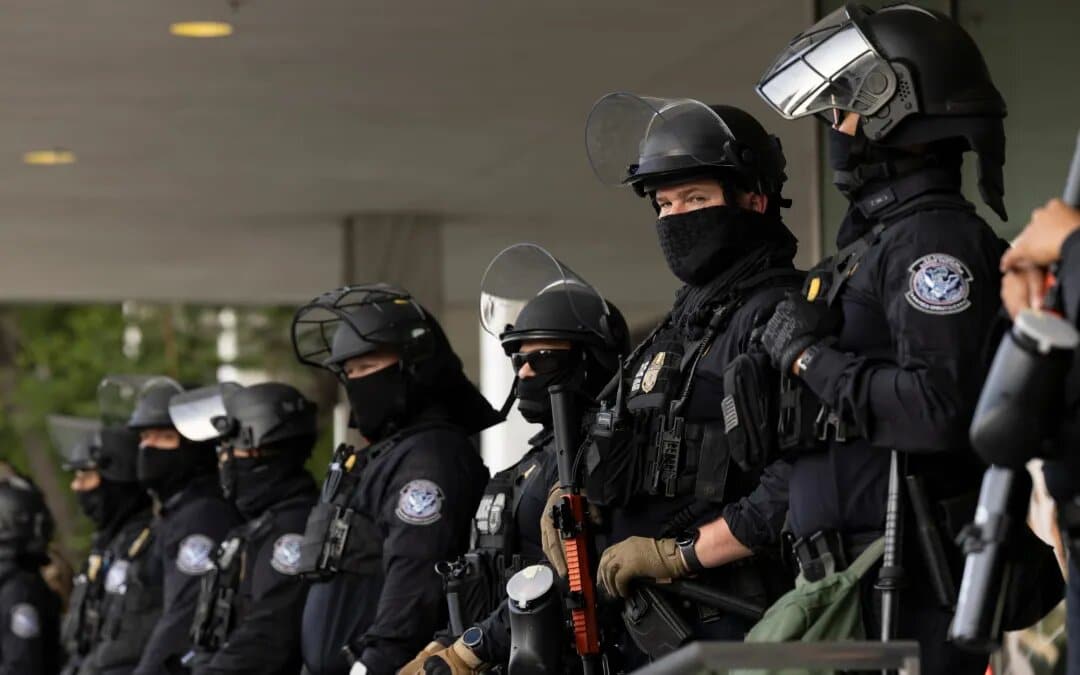Only a few years after the pandemic, young kids in this country are seeing a whole new disruption to their learning: immigration raids.
One of the Trump administration’s first actions after assuming office was to rescind the Biden administration’s guidelines for Immigration and Customs Enforcement (ICE), which limited enforcement activity in “sensitive locations” like schools and churches.
Since then, immigration raids have escalated — often under questionable pretenses. This spring, immigration agents tried to enter two elementary schools in Los Angeles. At the door, agents said they wanted to determine students’ well-being and claimed to have authorization from the children’s caretakers.
Administrators denied them entry — and when they spoke with caretakers later, they learned that agents had lied about receiving permission. “I’m absolutely incensed that DHS agents would try to enter elementary schools,” said Rep. Judy Chu (D-CA). “These are children who should be learning to read and write, not cowering in fear of being ripped away from their homes.”
READ: Central Bucks Community Grapples with the Specter of ICE Raids at Local Schools
Unfortunately, schools are no longer a safe haven for our students. You can imagine the trauma and disruption that comes from armed agents entering schools and removing students. But these raids will also have long-term implications on learning outcomes, mental health, and even school funding for children enrolled in public schools nationwide.
And we’re seeing that now in rising rates of absenteeism.
In June, Stanford professor Thomas Dee published a groundbreaking report detailing the relationship between raids and school absences. Focusing on recent raids in California’s Central Valley region, Dee studied attendance data from over three years at five nearby school districts. Dee was able to correlate raids with a 22 percent increase in student absenteeism, particularly affecting youngest learners.
In the weeks following Dee’s report, media outlets from across the county — from New York to Denver and Chicago — reported similar patterns of immigration raids leading to increased student absences. Fearful of raids, families across the nation have opted to keep their children home.
In many states, including California, school funding is determined by average daily attendance. This means that the more students miss school, the less that school will receive going forward. So when a raid forces a student to miss school, it doesn’t just impact their own learning — it also means fewer resources for their classmates, teachers, and their entire district.
This threatens the public school ecosystem, inflicting long-term harm on a generation of students already recovering from pandemic-era setbacks. “Absences are both more common for everybody, but they are also more extreme,” said Jacob Kirksey, an associate professor of education policy at Texas Tech. Raids “can essentially create what we found from COVID — this generation of students who have a patently different experience with schooling.”
Importantly, students and educators still have rights. For instance, a school district cannot ask about a student’s citizenship or immigration status as proof of that student’s residency. Students have the right to withhold this information, and schools may not prohibit that student from enrollment if they do not disclose it.
You can explore your legal protections as a student or an educator by visiting MySchoolMyRights.com, a website published by the ACLU where you’ll find clear, accessible guidance on what ICE can or can’t do in schools.
Over half of American voters believe schools should not be touched by immigration raids. They understand that ICE raids on schools don’t make communities safer. They make classrooms emptier and schools more vulnerable to funding cuts.
We must advocate on behalf of those students by demanding transparency and passing policies that limit ICE access to protect our students and families. We owe all kids a safe haven at school and the freedom to learn without fear.
This op-ed was distributed by OtherWords.org.






